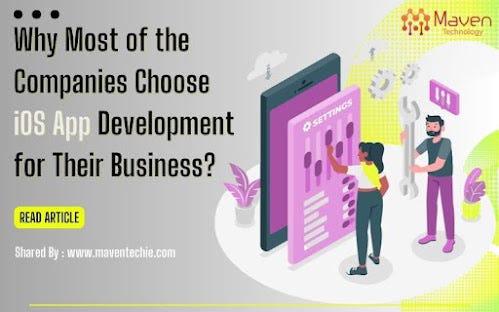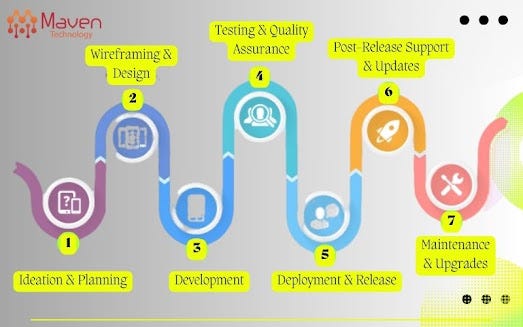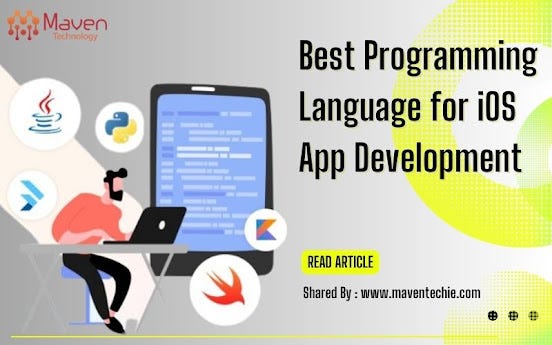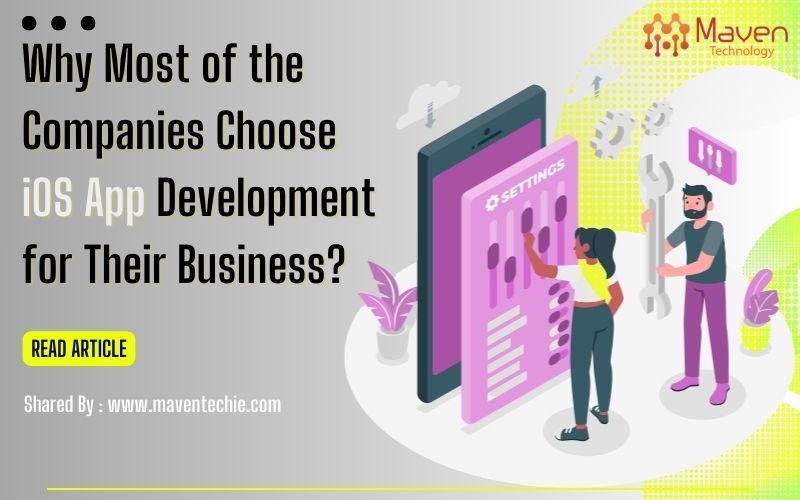The steps for the iOS application development process are the same as what you will find in the Android app building process.
Let’s begin! There are 6,3788 billion smartphone users worldwide now. Approximately, 73% of them prefer devices with the Android operating system. The rest 27% are dedicated to Apple technologies with iOS.
Developing an iOS app can seem overwhelming for those not familiar with the process. There is a way to change the situation and make it better. If you know the right tools to start with and the proper methods to build your first app, you can achieve faster results that will excite both you and your team.
This will motivate you to continue expanding and developing your app further. The first step in the process of creating an iOS app is to decide what your goals are. Do you want to create a new app for yourself, for your business, or for a client? Which tool that you need to share with others?
We might be the best iOS app development company for your company. Let us know how we can help you move forward with your iOS app development project.

Why Acquire an iOS App for Your Business Operation?
As we know, iOS is not the leading mobile platform in the world. The first place belongs to Android with 72,18% of user preference. iOS occupies only 26.96% of the global mobile operating system market share. However, even taking second place, iOS remains one of the most successful mobile operating systems among its competitors.
But, Why develop an iOS app for your business? To have a clear answer, you need to know about the pros and cons of this platform.
- Pushing the boundaries and making breakthroughs at innovations.
- Clients become more tech-savvy.
- Serving excellent CX.
- User-friendly with its design interface.
- More secure & protected opportunities.
- Allowing low fragmentation.
- Easy to test & running phase.
- Ensure greater ROI.
As a business owner, you know what’s important to your target customers. That’s why we have developed an iOS app development strategy that will help you maximize the potential of your online business and make it stand out from the crowd.
Looking for an amazing mobile operating system? Look no further than iOS, developed by none other than Apple Inc! Get ready for a seamless and intuitive user experience that will keep you coming back for more. The iOS platform is designed to run on a wide range of Apple hardware and software devices, including iPhones, iPads, and iPod Touch devices.
To build a successful iOS application, it is recommended that you go for an App Development Company that is well-known and reputed in the market.

Unveiling the iOS Mobile Application Development Process and Stages :
As businesses strive to reach a wider audience, iOS app development has emerged as a crucial aspect of their growth strategy. In this blog, we will explore the process and stages involved in developing an iOS mobile application.
- Ideation and Planning : The first stage of iOS app development involves ideation and planning. It is essential to define the app’s purpose, target audience, and unique selling points. Conduct market research to understand user needs, preferences, and competition. Create a solid app concept, outline features, and determine the scope of the project.
- Wireframing and Design : Once the app concept is solidified, it’s time to move into the visual phase. Wireframing allows you to create a basic layout and structure of the app. During this stage, crafting a flawless user experience (UX) and designing an intuitive user interface (UI) is crucial. Careful consideration is given to navigation, layout, color schemes, fonts, and branding elements to ensure a visually appealing and intuitive design.
- Development : The development stage is where the app starts taking shape. Skilled iOS developers use programming languages like Swift or Objective-C to code the app’s functionalities. They integrate UI elements, database management, APIs, and other features as per the wireframes and design guidelines. The development process involves regular testing, bug fixing, and optimization to ensure a seamless user experience.
- Testing and Quality Assurance : It’s important to put our app through rigorous testing to make sure it does exactly what it’s meant to do. You need to roll up your sleeves and ensure its performance is top-notch! Various testing methods such as functional testing, usability testing, performance testing, and compatibility testing are conducted to identify and rectify any issues. Bugs, glitches, or crashes are addressed, ultimately enhancing the overall quality and reliability of the app.
- Deployment and Release : Once the app is thoroughly tested and approved, it’s time for deployment. The app is submitted to the Apple App Store, where it undergoes a review process to meet Apple’s guidelines. Once approved, it is released for download and installation by users. App Store optimization techniques are employed to improve visibility and attract potential users.
- Post-Release Support and Updates : The release of an app does not mark the end of the development process. Regular updates and support are essential to address user feedback, fix bugs, introduce new features, and adapt to changing technologies and user expectations. Post-release support involves monitoring user feedback and reviews, addressing any reported issues promptly, and continuously improving the app’s performance and functionality. Regular updates ensure that the app remains compatible with the latest iOS versions and devices, guaranteeing a smooth user experience.
- Maintenance and Upgrades : As technology evolves, it is essential to keep the app up to date to retain user engagement and stay ahead of the competition. Maintenance involves monitoring the app’s performance, analyzing user data, and making improvements based on user behavior and market trends. Upgrades may include adding new features, enhancing security measures, optimizing performance, and incorporating emerging technologies like augmented reality or machine learning.
Developing an iOS mobile application involves a systematic and well-defined process that spans from ideation and planning to deployment and maintenance. Each stage contributes to creating a seamless user experience and a successful app.
Also Read Here : How a Mobile Application Helps You in Your Business Growth?
By understanding the process and incorporating best practices, businesses can leverage iOS app development to expand their reach, engage with their audience, and achieve their goals.

Demystifying the Languages Used in iOS App Development!
iOS, the operating system that powers Apple’s mobile devices, has gained significant popularity worldwide. Behind the creation of iOS applications lies a specific set of programming languages. In this blog, we will explore the primary languages used in iOS development and their significance in building robust and feature-rich applications.
Swift :
Swift, developed by Apple, is the primary programming language for iOS app development. Introduced in 2014, Swift has quickly gained traction due to its modern syntax, efficiency, and safety features. With Swift, developers can write code that is concise, expressive, and easy to understand. Swift also provides a seamless integration with existing Objective-C frameworks, making it convenient for developers to migrate or work with legacy code.
- Swift is quick and flexible.
- Removing involvement of middle-man or other languages which is needed to interpret the code.
Objective-C :
Objective-C has been the traditional language for iOS development for many years and continues to be widely used today. It is a superset of the C programming language and adds object-oriented features and dynamic runtime capabilities. Objective-C is known for its stability, mature libraries, and extensive support, making it a preferred choice for developers maintaining legacy codebases or integrating with existing Objective-C libraries.
C# :
C# is an object-oriented programming language developed by Microsoft in 2000 and can now be used to create iOS apps with Xamarin.
Xamarin is an open-source Microsoft software platform built on C#. Teams can streamline app development and support by sharing code for different platforms.
- It offers “Great community support”.
- Due to its open source, it’s easy to access.
- Microsoft.NET framework.
- High-quality performance.
- Large library.
- Cross & platform-friendly support.
- Easy to integrate.
- Scalable.
JavaScript (with frameworks like React Native) :
While not a native language for iOS development, JavaScript has gained popularity through frameworks like React Native. React Native allows developers to build iOS applications using JavaScript and a set of pre-built components. It provides the advantage of code reusability across platforms, enabling developers to create cross-platform apps with a single codebase.
Dart :
Dart, created by Google, is a statically typed programming language known for its simplicity, performance, and ease of learning. It combines the best features of object-oriented and functional programming, making it versatile and flexible for various development needs. Dart’s reliable just-in-time (JIT) compiler allows for efficient and rapid development, while its ahead-of-time (AOT) compilation ensures high-performance execution.
Dart is its primary language for building cross-platform mobile applications. Dart’s reactive style and comprehensive set of libraries enable developers to create beautiful UIs and build complex functionality with ease. Its efficient JIT and AOT compilation process enables the execution of code with minimal overhead, resulting in smooth animations, quick app startup times, and reduced lag. Dart’s memory management and garbage collection mechanisms further optimize app performance, resulting in a seamless user experience. One of the key advantages of Flutter and Dart is the ability to write a single codebase for multiple platforms.
iOS development relies primarily on Swift, C#, Dart, and Objective-C as the core programming languages. Swift offers a modern, secure, and efficient syntax, while Objective-C provides stability and compatibility with legacy code. Additionally, C# brings a revolutionary approach to building user interfaces.
Understanding the languages used in iOS development is essential for aspiring iOS developers or businesses looking to hire iOS development Each language has its strengths and areas of application, allowing developers to build powerful, user-friendly, and innovative iOS applications.
RESOURCE URL : https://maventechie.blogspot.com/2023/11/ios-app-development-ultimate-guide.html


No comments yet